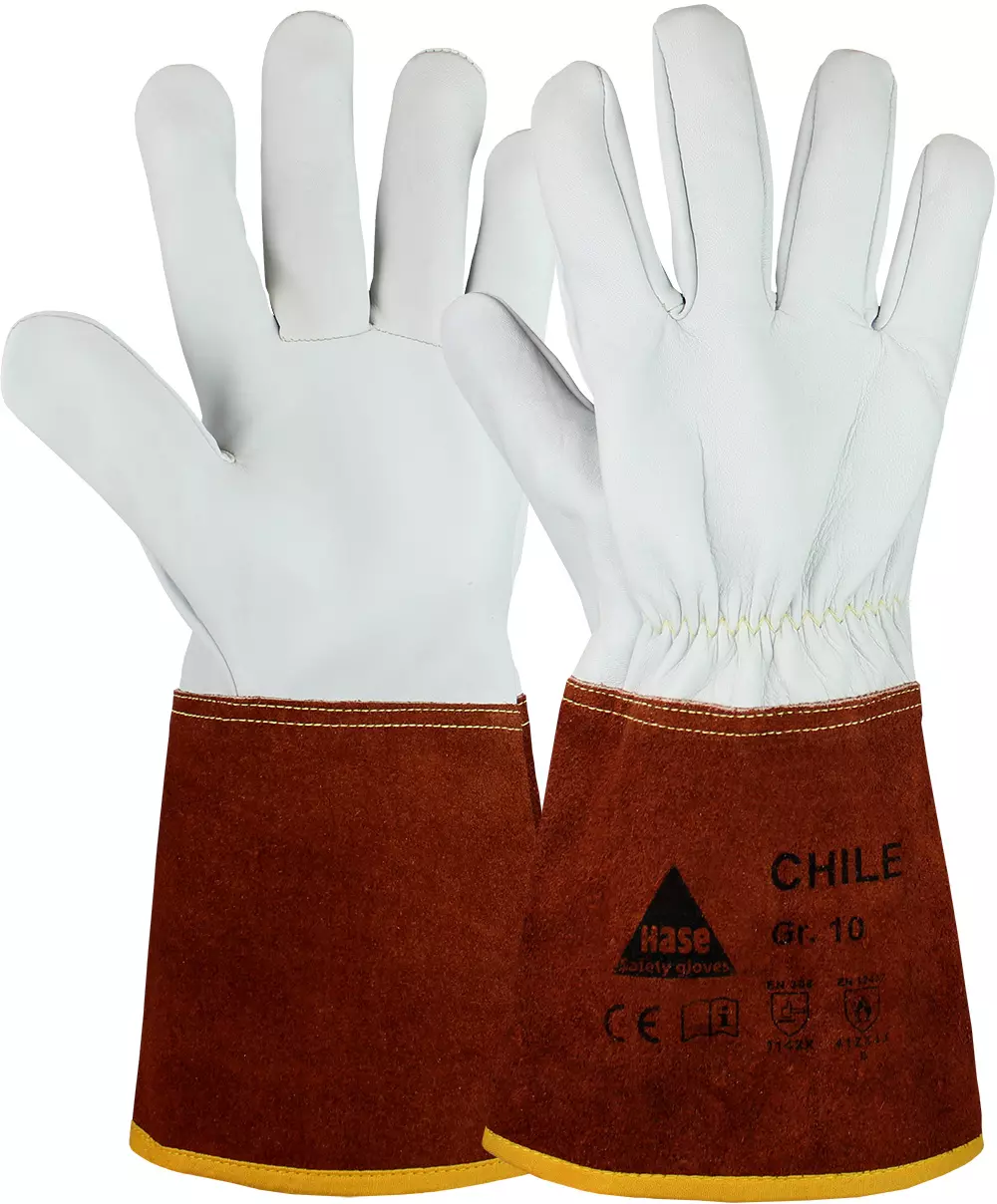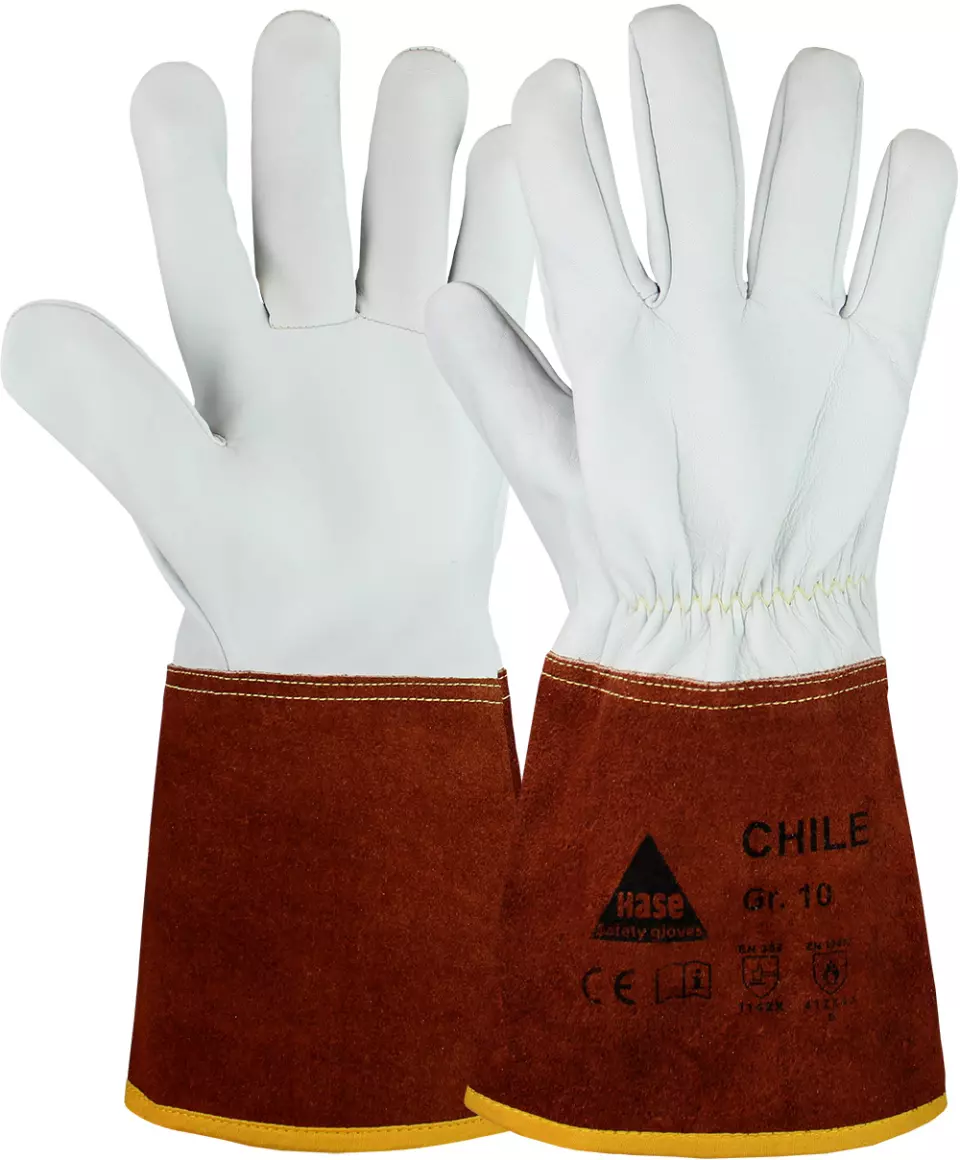
Features You'll Love

Cuff Style · Elastic
The elastic cuff provides a snug, secure fit, keeping debris out and ensuring your gloves stay comfortably in place.

Cuff Style · Open
Effortlessly slip your gloves on and off for quick transitions and unhindered movement.

EN 388 · Abrasion Resistance Level 1, Tear Resistance Level 4, Puncture Resistance Level 2
EN 407 · Burning Behaviour Level 4, Heat Contact Level 1, Heat Convection Level 2, Radiant Heat Level X, Metal Splash Resistance Level 4, Molten Metal Resistance Level X
Provides basic resistance against scraping and surface wear for low-risk tasks.
Offers the highest level of protection against tearing, withstanding a strong force before ripping.
Withstands moderate force from sharp objects like heavy-duty splinters or wires.
Provides the highest level of protection against catching fire when exposed to a naked flame. After the flame is removed, the material will stop burning within 2 seconds and stop glowing within 5 seconds.
Provides protection when briefly touching hot objects. Certified for contact with surfaces up to 100°C for at least 15 seconds, offering short-term protection against burns from items like hot cookware or machinery parts.
Provides moderate protection by delaying heat transfer from an open flame. Ideal for tasks where hands are near, but not touching, a flame, giving you more time to move away safely from the heat source.
This product was not tested for protection against radiant heat, which is intense heat that can be felt from a distance. It does not claim to offer protection for tasks involving prolonged exposure to radiant heat sources.
Provides the highest level of protection against large splashes of molten metal, tested to resist amounts greater than 200 grams. This makes it essential for high-risk industrial jobs like foundry work and heavy welding.
This product has not been tested for resistance against splashes of molten metal. It provides no claimed protection and should not be used for welding, foundry work, or other tasks with molten metal risks.
Hase Safety Gloves
CHILE Welding Gloves, 10 pairs
CHILE Welding Gloves, 10 pairs
4.7 / 5
72,63 €
Price per 10 pairs
7,26 € / pair
Choose size
Free delivery
Features You'll Love

Cuff Style · Elastic
The elastic cuff provides a snug, secure fit, keeping debris out and ensuring your gloves stay comfortably in place.

Cuff Style · Open
Effortlessly slip your gloves on and off for quick transitions and unhindered movement.

EN 388 · Abrasion Resistance Level 1, Tear Resistance Level 4, Puncture Resistance Level 2
EN 407 · Burning Behaviour Level 4, Heat Contact Level 1, Heat Convection Level 2, Radiant Heat Level X, Metal Splash Resistance Level 4, Molten Metal Resistance Level X
Provides basic resistance against scraping and surface wear for low-risk tasks.
Offers the highest level of protection against tearing, withstanding a strong force before ripping.
Withstands moderate force from sharp objects like heavy-duty splinters or wires.
Provides the highest level of protection against catching fire when exposed to a naked flame. After the flame is removed, the material will stop burning within 2 seconds and stop glowing within 5 seconds.
Provides protection when briefly touching hot objects. Certified for contact with surfaces up to 100°C for at least 15 seconds, offering short-term protection against burns from items like hot cookware or machinery parts.
Provides moderate protection by delaying heat transfer from an open flame. Ideal for tasks where hands are near, but not touching, a flame, giving you more time to move away safely from the heat source.
This product was not tested for protection against radiant heat, which is intense heat that can be felt from a distance. It does not claim to offer protection for tasks involving prolonged exposure to radiant heat sources.
Provides the highest level of protection against large splashes of molten metal, tested to resist amounts greater than 200 grams. This makes it essential for high-risk industrial jobs like foundry work and heavy welding.
This product has not been tested for resistance against splashes of molten metal. It provides no claimed protection and should not be used for welding, foundry work, or other tasks with molten metal risks.
Product description
Welding glove made of sheepskin nappa leather with cow split leather cuff, Kevlar® seams, elasticated back. EN 388, EN 407, EN 12477